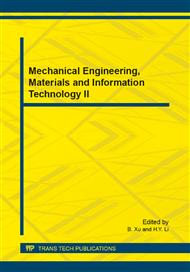[1]
MS Bader, J Hawboldt and A Brooks, Management of complicated urinary tract infections in the era of antimicrobial resistance, , Postgrad Med (2010), 122: 7 -15.
DOI: 10.3810/pgm.2010.11.2217
Google Scholar
[2]
J George, I Sturgess, S Purewal et al, Improving quality and value in healthcare for frail older people, , Qual Ageing( 2007), 8: 4–9.
DOI: 10.1108/14717794200700022
Google Scholar
[3]
MET McMurdo, ND Gillespie, Urinary tract infection in old age: Over-diagnosed and over-treated, Age Ageing (2000), 29: 297–298.
DOI: 10.1093/ageing/29.4.297
Google Scholar
[4]
T. Schulz, M. J. Machado, A. Treitinger, A. Fiamoncini, and L. M. D. O. Niederauer, "Risk associated with dipstick urinalysis for diagnosing urinary tract infection, , vol. 1, no. 1( 2014), p.1–6.
Google Scholar
[5]
WLJM Deville, JC Yzermans, NP Van Duijn et al, The urine dipstick test useful to rule out infections, A meta-analysis of the accuracy. BMC Urol (2004), 4: 4.
DOI: 10.1186/1471-2490-4-4
Google Scholar
[6]
M Juthani-Mehta, M Tinetti, E Perrelli et al, Role of dipstick testing in the evaluation of urinary tract infection in nursing home residents, , Infect Control Hosp Epidemiol (2007), 28: 889–891.
DOI: 10.1086/518752
Google Scholar
[7]
James, G. P., K. L. Paul, and J. B. Fuller, Urinary nitrite and urinary-tract infection, Am. J. Clin. Pathol (1978), 70: 671-678.
DOI: 10.1093/ajcp/70.4.671
Google Scholar
[8]
P. -D. Sundvall, P. Ulleryd, and R. K. Gunnarsson, Urine culture doubtful in determining etiology of diffuse symptoms among elderly individuals: a cross-sectional study of 32 nursing homes, BMC Fam. Pract., vol. 12, no. 1 (Jan. 2011), p.36.
DOI: 10.1186/1471-2296-12-36
Google Scholar
[9]
M. Pezzlo, Detection of urinary tract infections by rapid methods, Clin. Microbiol. Rev., vol. 1, no. 3 (Jul. 1988), p.268–80.
DOI: 10.1128/cmr.1.3.268
Google Scholar
[10]
X. Zhao and T. Dong, Multifunctional sample preparation kit and on-chip quantitative nucleic Acid sequence-based amplification tests for microbial detection, , Anal Chem, vol. 84(Oct 16, 2012), pp.8541-8.
DOI: 10.1021/ac3020609
Google Scholar
[11]
N. M. Pires and T. Dong, A cascade-like silicon filter for improved recovery of oocysts from environmental waters, Environ Technol, vol. 35(Mar-Apr 2014), pp.781-90.
DOI: 10.1080/09593330.2013.851280
Google Scholar
[12]
Y. Hu, J. Beach, J. Raymer, and M. Gardner, Disposable diaper to collect urine samples from young children for pyrethroid pesticide studies, J. Expo. Anal. Environ. Epidemiol., vol. 14, no. 5 (Sep. 2004), p.378–84.
DOI: 10.1038/sj.jea.7500334
Google Scholar
[13]
X. Zhao and T. Dong, Design and Experimental Approach to the Construction of a Human Signal-Molecule-Profiling Database, International Journal of Environmental Research and Public Health, vol. 10 (2013), pp.6887-6908.
DOI: 10.3390/ijerph10126887
Google Scholar
[14]
Z. Lei and D. Tao, A Si/SiGe quantum well based biosensor for direct analysis of exothermic biochemical reaction, Journal of Micromechanics and Microengineering, vol. 23(2013), 045011.
DOI: 10.1088/0960-1317/23/4/045011
Google Scholar
[15]
N. Tran-Minh, T. Dong, Q. H. Su, Z. C. Yang, H. Jakobsen, and F. Karlsen, Design and optimization of non-clogging counter-flow microconcentrator for enriching epidermoid cervical carcinoma cells, Biomedical Microdevices, vol. 13 (Feb 2011), pp.179-190.
DOI: 10.1007/s10544-010-9483-5
Google Scholar


